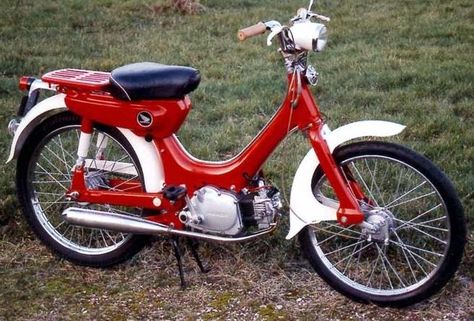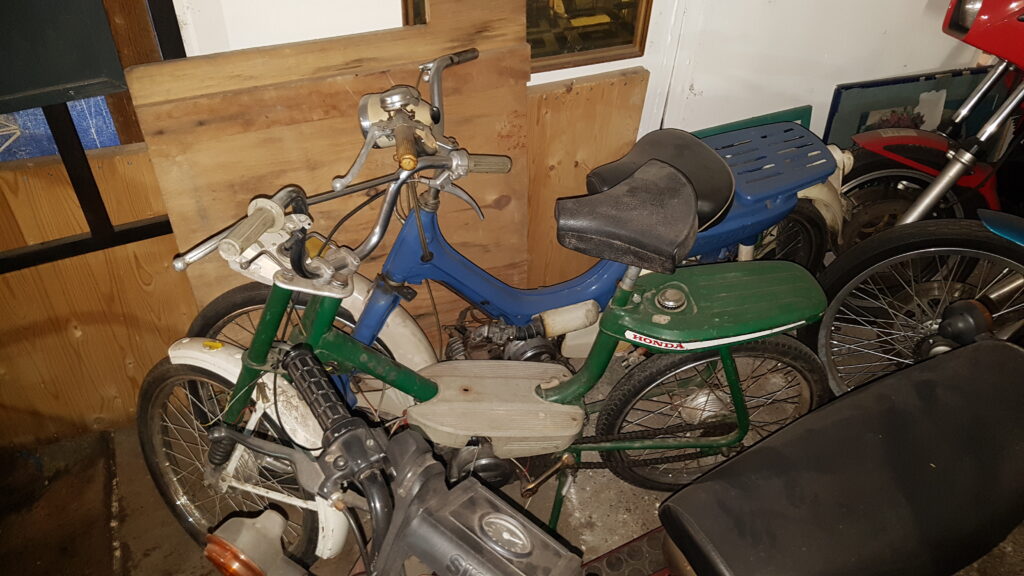1968 Honda PC50

Born out of the Honda Super Cub, the 50cc moped that made the world addicted to gasoline. The PC50 was one of the many different Dutch iterations of the same concept; a simple 4-stroke 50cc moped combined with pedals. Sharing many parts with its cousins C50, C310, PF50 etc. it is easy to maintain if it needs to be maintained. Some specs from the original sales guide:
49cc 4-stroke engine
Maximum speed: 40 km/h
Horsepower: 1.75 @ 5750 RPM
Torque: 2.9 N/M @ 3500 RPM
Mileage: 90 kilometers / liter

There are a few reasons for using this vehicle and the first one is obviously gas mileage. A (liquid) liter of gasoline contains about the same amount of energy as a cubic meter (1000 liter) of slootgas. It takes about five minutes to collect five liters of slootgas, so we want our vehicle to be as efficient as possible with its fuel.
Four-stroke engine. As we switch from liquid fuel to gaseous fuel, it is easiest to convert a 4-stroke engine, as these do not need oil injected in to the engine or oil mixed together with fuel to lubricate the insides. A 4-stroke engine lubricates itself with it’s own engine oil, so all we need to do is add an extra fuel line.
Age. Produced in 1968 and still working perfectly fine in 2021. By now it can be considered written off. Maybe even multiple times already. I bought it from somebody who had it stored in a barn for a couple of years, non-running. Half a day of work, together with twenty euro’s in part made it run again.
Electronics. The bike does not need a battery, but is still able to power 6-volt electronics such as its own lights and an additional USB-charger for my (lithium powered) smartphone.
Speed. Where we are going, we don’t need speed at all. All we want is gas-fueled movement, speed somewhere far down the list. Speed (power) means bigger cilinder, higher compression and as a result, bigger consumption. Not only for vehicles, this goes for everything. Faster food means more consumption of resources. Faster growth means more accumulation of resources.
Pedal power. In the Netherlands, at the time of production, for a moped to be a moped it had to have pedals, otherwise it would’ve been classified as a motorcycle at that time. Not very cool, but very convenient when you run out of slootgas or need to transport yourself to the nearest source. Also, because of the limited power available by the engine, it’s nice to pedal along when accelerating in order to release some strain on the engine and keep it happier.
40 Kilometers per hour doesn’t sound like much, but it sure is when you are on a vehicle as small as this.
